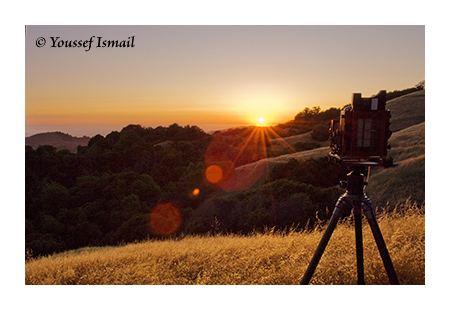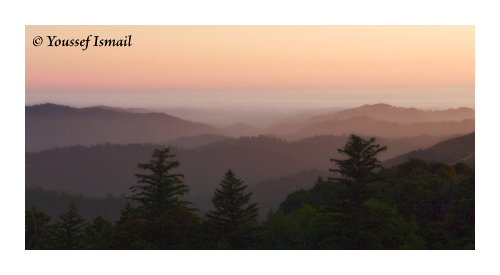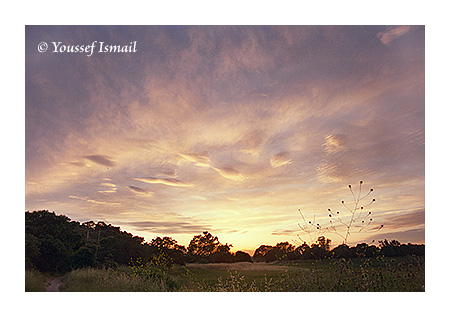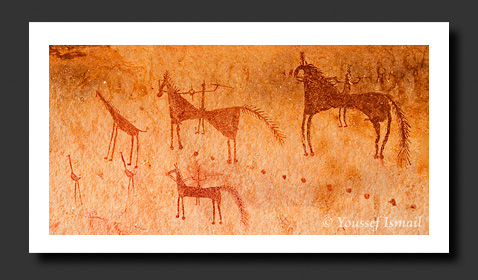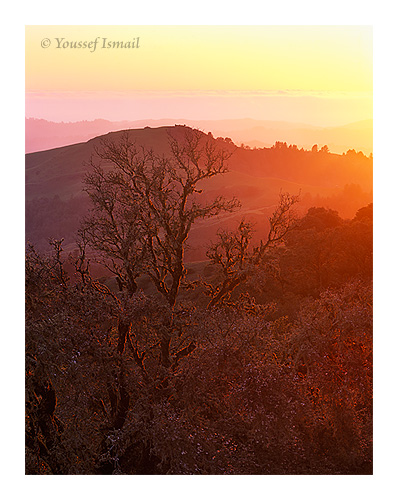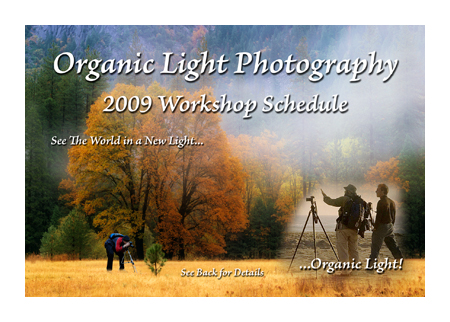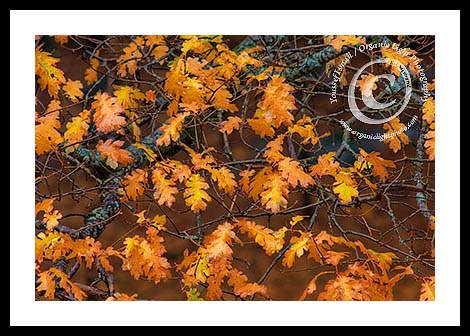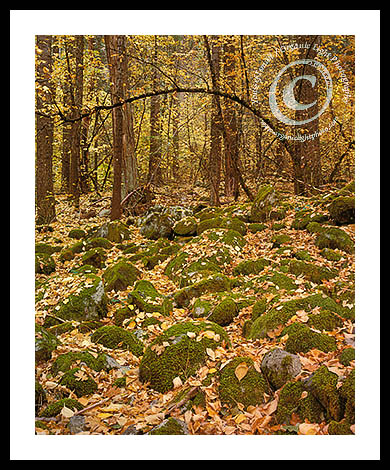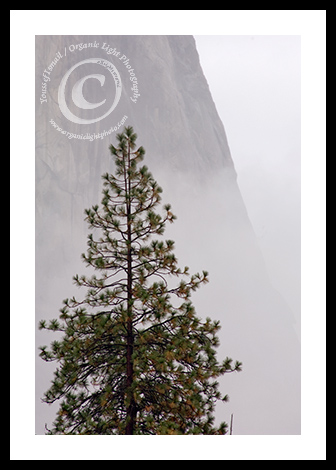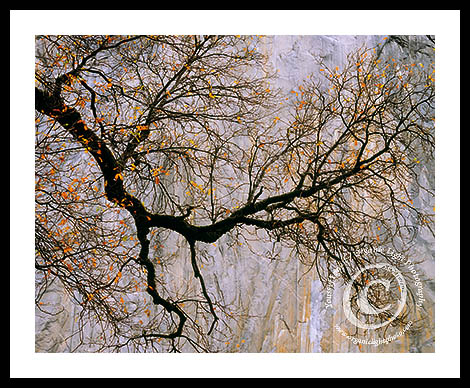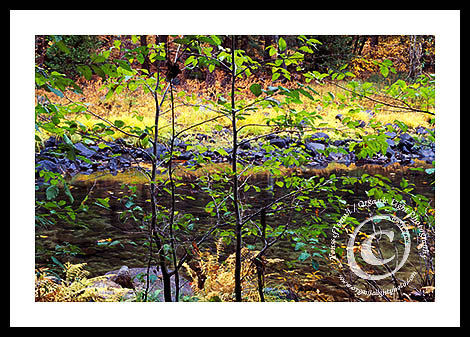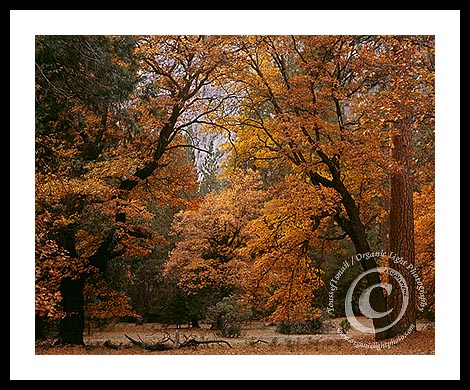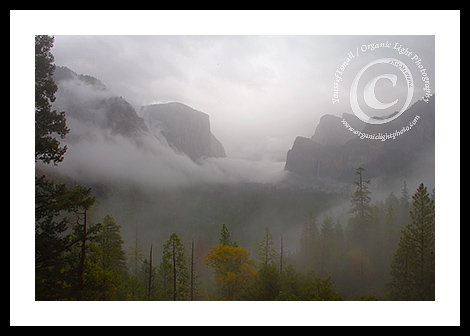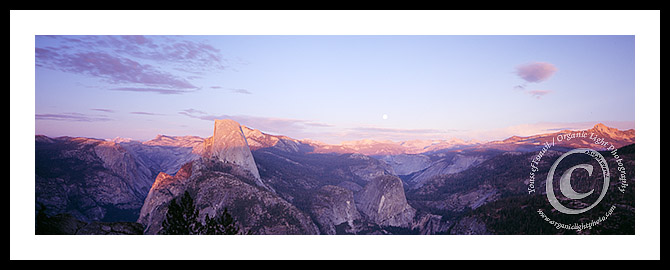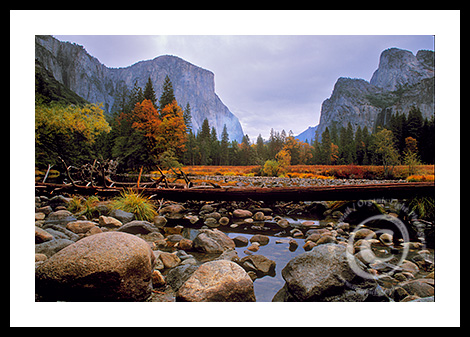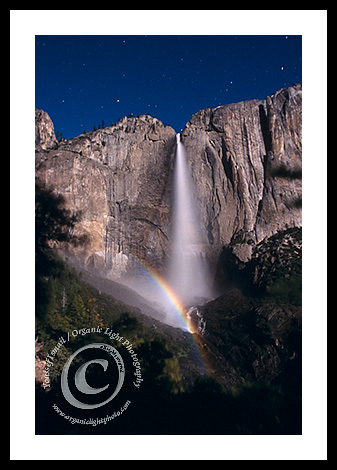It was that time of the month again – searching for the new moon. The conjunction took place on Sunday May 24th and on that evening, even though it was cloudy and overcast in my area, the moon was too small to be seen with the naked eyes. With Sunday being the 29th day since the last time the moon was seen, the descision of when the next new month, Jamad Ath-Thaani, would start was by default on Tuesday, completing the previous month as a 30 day month. This made searching for it on Monday not as critical. But that never stopped me.
This time around I was very excited to try and photograph the new moon using the large format 4×5 camera. Two weeks ago I found a Nikon 500mm f/11 Telephoto lens. A lens that I have been trying to find for almost three years. Nikon of course discontinued making that lens years ago and it rarely turns up on the used market, but two weeks ago chance would have it that I was searching for it and found one in near mint condition, for nearly 50% of what it goes for new! So I had always wanted this lens to allow me to include the moon, especially the new moon, in my landscape photos. So this new moon was going to be that lens’ maiden voyage in moon photography.
I decided I would spend the day out with my four kids, aka photo assistants, bumping around the coast giving their mother the day off. Destination – Point Lobos State Reserve on the Big Sur Coast. The day was clear and sunny until we reached Monterey and then the skies became overcast and gloomy. Upon our arrival, I realized that I had forgotten to bring along my photo vest. No big deal right? Wrong. For in it was my light meter, color meter, ND filters, and focusing loupe. Oops – No large format photography today. How was I to photograph the moon later? So I took a deep breath and decided that today was a day off, no serious photography. Yeah right.
With a small DSLR in hand the kids and I explored Point Lobos. It is a very intricate piece of the coast. The rocks are contorted in places, stratified in others, and conglomerate everywhere else. It is a very difficult place to capture in a photo. The light needs to be just right, and I still have not been there when it was just right. To add insult to injury the reserve is in full bloom right now. California Poppies, Coast Paintbrush, Dudleas, and Seaside Daisies to name just a few.
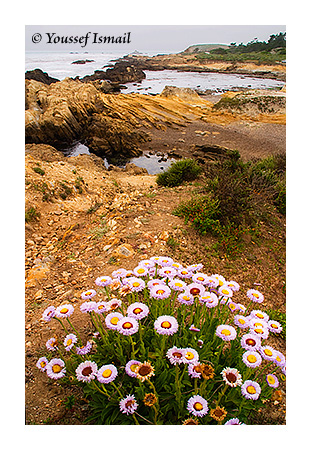
Point Lobos in Bloom
It takes time to get a feel for Point Lobos. It is a slow moving place. The sea does not churn with great waves rather slow moving turbulent waters sloshing in and out of the rocky cliffs. Capturing this water action is another matter altogether. Timing is everything with these conditions. Clearly a digital camera makes this endeavor less painful to the pocket and much more enjoyable knowing you got the action at its peak.
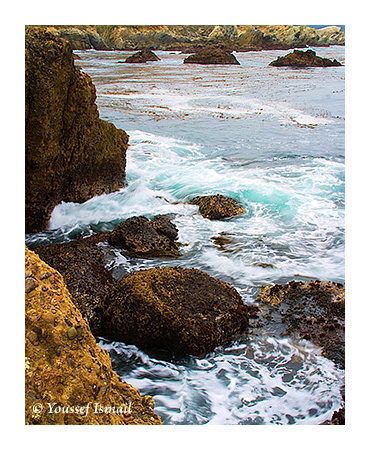
Water Action at Point Lobos
At the same time however, when working with the big camera and film, there is a certain connection that is made between you and the ocean. You spend more time studying the water. You watch the waves, not one or two, but tens of waves until you start seeing the attributes in the wave that are needed to create the perfect water action. Such was the case when Controlled Chaos, Rush Hour and Mist-erious Seas were made. But this time, it was kind of nice having the digital camera to see the results right away. It allowed me to capture something nice and still keep my attention on my four intrepid explorers.
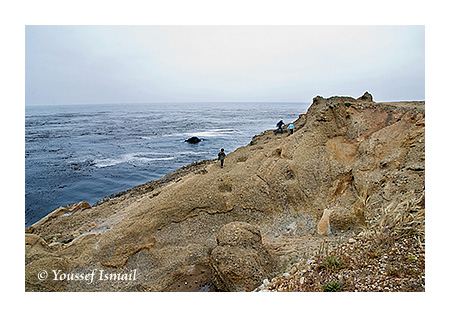
Rough Runners
Theodore Roosevelt, known as the “Rough Rider”, was once quoted as saying “Far better is it to dare mighty things, to win glorious triumphs, even though checkered by failure… than to rank with those poor spirits who neither enjoy nor suffer much, because they live in a gray twilight that knows not victory nor defeat“. Well I think my kids are taking that to heart in a very serious way. Its as if they don’t know that there are limits to how daring one can be. Put a camera in their hands and they stop at almost nothing to capture what they see.
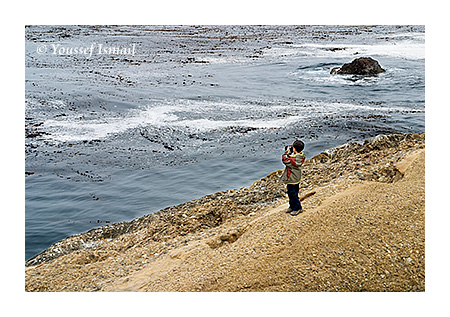
On The Edge
And if I had let her, my three year old would have have followed them out onto that rock. In time. Her ambition preceeds her sure footedness for now, and even though she is gung-ho to follow her siblings, she readily accepts a fatherly hand or a ride on the shoulders to get to where she wants. But once there, she gets into the thick of it in a serious way. I think that is what makes the magic of childhood so grand. They don’t know their own limits and so they are willing to try everything. Sometimes however, it is to their own demise and detrement, especially if the wisdom of the parents is not there to keep their foolhardiness in check, inspite of the dissenting voices insisting that they can do it. But caution aside, and they find the most amazing places.
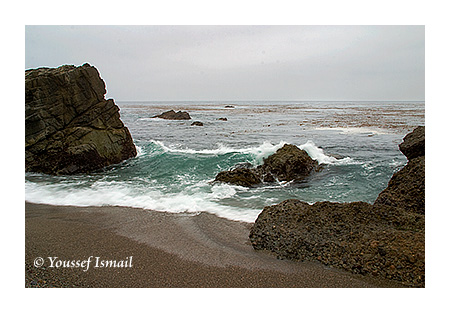
Hidden Beach
We arrive at Hidden Beach. A small secluded cove beach on the south end of the more popular Weston Beach. Its a small beach no more than about 50 feet at its widest point and with a narrow opening to the sea. The beach itself is made up entirely of small rocks and pebbles in a rainbow of colors and hues. The kids quickly find the most dangerous place on the beach to explore, a small indentation in the rocks on the north side of the beach, a small cave of sorts that they quicky dub “The Cave of Terror”.
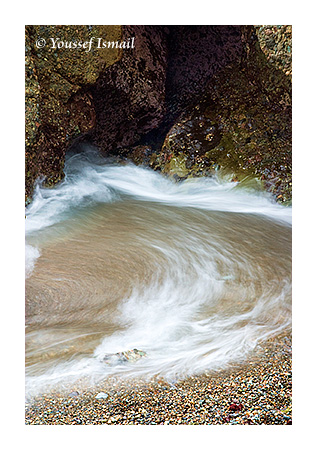
The Cave Of Terror
With each large wave a rush of water comes in and encircles the large rock on the north side of the beach and rushes around to fill in the “cave”. The only refuge from the rushing water is a small rise of rocks in the cave directly up against the wall. But once trapped in there, the sight of onrushing water is enough to elicit the squeals of doom from children who think the end is upon them! Then in a sudden rush of panic they dart out of the cave as the water subsides, proud in themselves thinking that they had just escaped a catastrophe of monumental proportions. Once they gleened all the thrill they could from the cave of terror, the fascination of minutia found on the beach quickly overtook them. For the next two hours, they combed that small beach for anything that did not resemble a rock or a pebble. And in some cases what they found was indeed fascinating. Suddenly a thought occured to me. I remembered a series of photographs made by Georg Popp and his family during their outings at the seashore. So I looked around the pebbles for some likely Found object to be the base of an image. I then called my kids and explained what we were to do. Bring everything you find, everything. We’ll pick the best and put them together to make a photogrpah of our day at Point Lobos. So here over the course of two hours is a succession of photos resulting in “Lost and Found”.
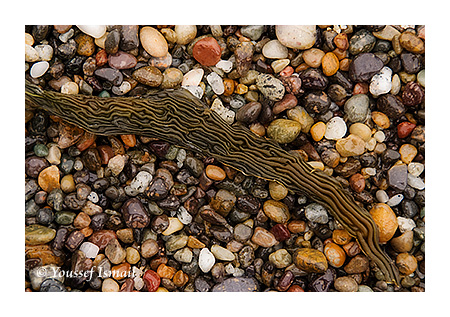
The Base
The base context of the final image was this piece of kelp that had started to dry out. I positioned the camera directly over it and made this base photo. Then the first wave of interesting items started to appear. I widened the view a bit and started to arrange the items.
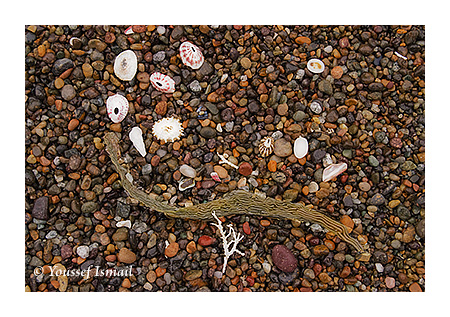
Initial Items Placed
At this point, I decided to start in the hunt of things as well. I brought in more than just the shells my kids found as there was more to be found on the beach than just that. I found blades of sea grass, other bits of kelp, pieces of coral, crab shells and other colorful pebbles and stones. Pieces of irridescient mother-of-pearl on the insides of broken scraps of abolone shells and animal’s teeth as well. We would probably still be there now finding stuff had it not been that high tide was threatening our “canvas”.
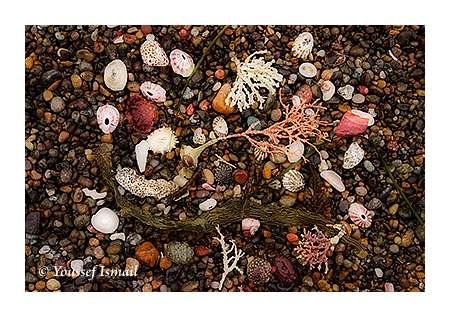
Filling up the space
With a few more items, like a blade of sea grass, an old sea-bleached crab pincer, a headless crab with legs still attached, a few more shells, and voila. Lost and Found.
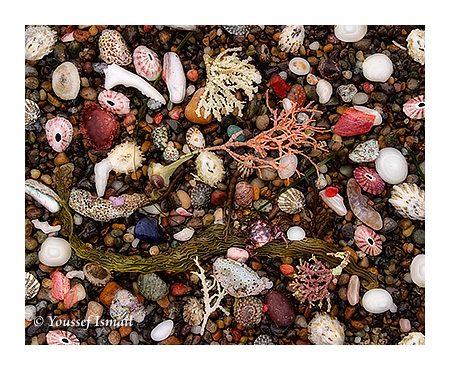
Lost And Found
All these items were once alive. They lost their lives at sea and tossed and turned in the waves, carried for who knows how long and for how far, they managed to be washed ashore on Hidden Beach. Lost for countless time, unseen by untold numbers of visitors to this beach. A veritable cornicopia of visual delights found by four children and their child-hearted father and arranged together to give a picture of what diverse life exists under the sea. It is one of the most enjoyable photographs I have ever made during one of the most memorable days I have ever had. You can be sure that Lost and Found will be hanging on one of our walls very shortly.
Oh…and whatever happened with sighting the new moon. The skies in Big Sur stayed overcast the whole time. With just over one hour before sunset, we set out on the road in search of a place where the skies were clear. We dashed north along Highway 1 hoping to see some clear skies. The skies that were clear just a few short hours ago, were now gray and enshrouding. I began to think that we might not see it at all. Even as far north as Santa Cruz, the skies were still overcast. I figured I would need to be above the marine layer to even have a chance, but time was not on our side. As we neared the Highway 17 interchange that would lead us up into and over the Santa Cruz mountains, I spotted some color on the horizon just north of Santa Cruz. So we continued north until we reached Wilder Ranch State Park, and we made our stand there. There we were able to see clear sky and it remained so for about 20 minutes. Then no more than ten minutes after sunset, fairly high up in the sky, the fine feathery whisp of a crescent appeared.
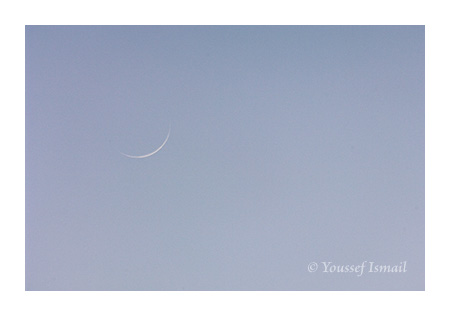
Jamad Ath-Thaani, 1430
And so what started out as a day of photography gone bad, turned out to be a day of interesting dichotomies. Abandon and Wisdom, Life and Death, Lost and Found, and Ending with a Beginning. But why should that surprise us? For has not this world been created with everything in it as pairs? From things to events to feelings, everything has its opposite and together they create a balance and harmony that keeps this world and everything in it going.
Peace to All.
